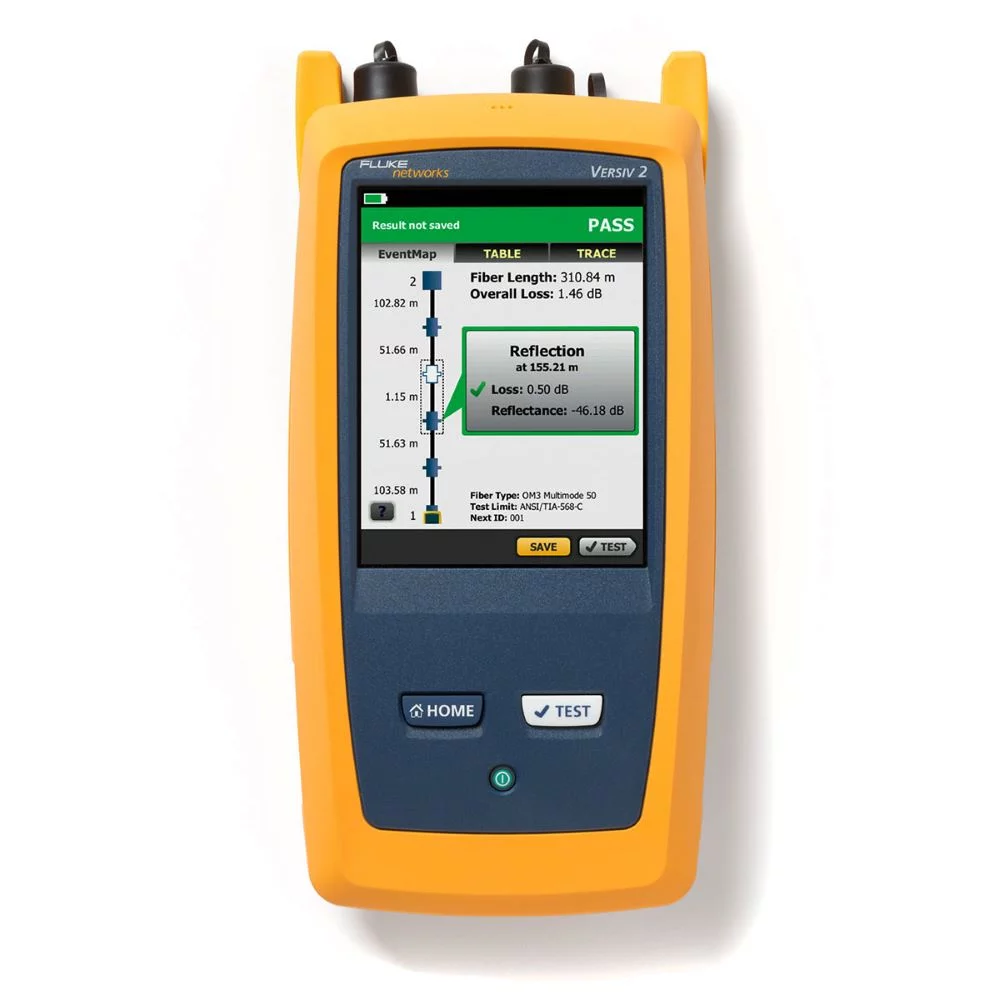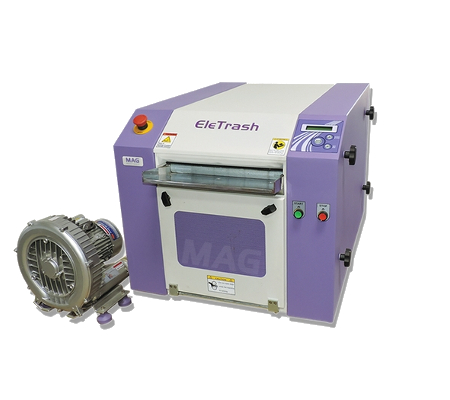Discovering Advanced Techniques in Fiber Measurement and Their Market Influence
In today's textile sector, precise fiber dimension is necessary for optimizing manufacturing processes and meeting sustainability goals. With the increase of ingenious imaging and logical devices, you can acquire deeper insights into fiber structure and make-up. This change not just improves efficiency but also straightens with sector criteria. As these sophisticated techniques evolve, you may ask yourself how they can even more change manufacturing methods and influence the future of textiles.
The Significance of Accurate Fiber Measurement in Textile Production

Innovative Imaging Technologies for Fiber Evaluation
When it concerns fiber analysis, innovative imaging modern technologies are video game changers. High-resolution microscopy strategies and spectroscopic evaluation approaches supply you with thorough insights right into fiber framework and structure. These improvements not only enhance accuracy but likewise improve your measurement processes.
High-Resolution Microscopy Techniques
High-resolution microscopy strategies have actually revolutionized fiber analysis, allowing scientists to picture fibers at unmatched degrees of information. With techniques like scanning electron microscopy (SEM) and transmission electron microscopy (TEM), you can observe fiber morphology, surface attributes, and cross-sections with exceptional clarity. These strategies allow you to compare different fiber types and examine their structural stability. You'll locate that high-resolution imaging aids determine flaws, additions, and various other critical attributes that can affect material efficiency. Moreover, innovations in electronic imaging software have actually boosted image processing, making it much easier to assess and analyze information. By taking on these innovative strategies, you can drive better accuracy in fiber measurement and add to improvements in numerous sectors, from fabrics to compounds.
Spectroscopic Analysis Techniques
Spectroscopic analysis approaches have emerged as powerful devices for fiber characterization, supplying understandings that enhance high-resolution microscopy. You can use techniques like infrared (IR) spectroscopy, which helps determine the chemical composition of fibers by determining molecular vibrations. Raman spectroscopy supplies one more layer of information, enabling you to assess molecular structures with spreading of single light. These techniques not only enhance your understanding of fiber residential or commercial properties yet also enable the detection of contaminations and structural variants. By incorporating spectroscopic techniques with traditional microscopy, you gain a much more extensive view of fibers' physical and chemical features, increasing your research precision. Ultimately, these advancements can significantly influence product choice and quality assurance in numerous markets.
Advanced Analytical Tools and Their Applications
As you discover the domain name of fiber dimension, you'll discover that innovative analytical tools play a crucial role in enhancing accuracy and performance. Methods like high-performance liquid chromatography (HPLC) and gas chromatography (GC) permit you to evaluate fiber structure with impressive accuracy. These tools allow you to identify details elements and impurities, making certain quality assurance in your products.Additionally, utilizing scanning electron microscopy (SEM) gives you a detailed sight of fiber structure, aiding you understand exactly how various treatments impact efficiency. Modern software application also streamlines data evaluation, making it less complicated to analyze complicated outcomes and team up across teams.

Influence of Fiber Measurement on Production Effectiveness
While exact fiber dimension might seem like a small information, it considerably affects production efficiency in the textile industry. When you spend in accurate fiber dimension techniques, you can optimize raw product usage and lessen waste. This results in much better source appropriation, enabling web link you to generate high-quality materials without overusing resources.By understanding fiber qualities, you can tailor manufacturing processes to details products, improving your workflow and reducing downtime. Understanding the exact tensile toughness of fibers allows you change equipment setups for maximum performance. This not just accelerates manufacturing however additionally assures regular product quality.Moreover, precise fiber measurement helps you recognize issues early in the manufacturing line, protecting against expensive reworks and delays (fiber measurement). Generally, applying sophisticated fiber dimension strategies improves procedures, boosts performance, and inevitably enhances profitability. In today's open market, every detail counts, and exact fiber measurement is a game-changer
Sustainability Factors To Consider in Fiber Analysis Techniques
When you assess fiber, it's important to consider lasting practices that can lessen environmental influence. Making use of eco-friendly dimension methods and reducing waste in your assessments can substantially enhance your general sustainability. In addition, incorporating lifecycle evaluation into your methods can offer a clearer photo of your fiber's ecological impact.
Eco-Friendly Measurement Methods
Taking into consideration the expanding demand for sustainability in different industries, adopting green measurement techniques for fiber assessment has come to be crucial. You can start by making use of safe solvents and eco-friendly products in your screening processes. These options not only minimize environmental effect however likewise boost safety for your team. Executing digital measurement strategies can even more decrease waste, as they usually call for less physical examples and resources. Additionally, leveraging innovative technologies like near-infrared spectroscopy can yield precise results without hazardous chemicals. By picking these greener techniques, you add to a much more sustainable future while keeping high requirements in fiber top quality. Continued Ultimately, incorporating environment-friendly practices into your fiber analysis not just lines up with consumer values but likewise increases your brand's online reputation.
Lowering Waste in Assessment
To properly decrease waste in fiber evaluation, you can carry out approaches that enhance your screening procedures and reduce source usage. Begin by enhancing sample sizes; using smaller samples can produce precise results while saving materials. Next, buy multifunctional devices that permits different tests without needing several tools, reducing energy and source usage. You need to additionally take into consideration adopting electronic tools for information collection and analysis, which can lower paper waste and boost effectiveness. Routinely educating your group on lasting practices ensures every person's on board with waste reduction goals. Lastly, working together with suppliers who focus on sustainability can further improve my review here your efforts, permitting you to examine fibers while keeping a commitment to environmental obligation.
Lifecycle Evaluation Integration
Integrating lifecycle analysis (LCA) right into fiber evaluation methods can considerably enhance sustainability initiatives. By taking a look at the ecological impacts of fibers from manufacturing to disposal, you can identify areas for improvement. This method assists you comprehend source intake, power usage, and waste generation throughout the fiber's life.When you include LCA, you're not just gauging fiber features; you're additionally thinking about the environmental impact. This alternative view enables you to make educated decisions that focus on sustainability. You could choose fibers that require fewer resources or have a reduced carbon effect. Eventually, LCA equips you to maximize procedures, lower waste, and advertise eco-friendly selections in fiber production, straightening your exercise with international sustainability goals.
Industry Criteria and Laws Shaping Fiber Measurement
As the need for top notch fiber products expands, comprehending the industry criteria and laws that regulate fiber dimension ends up being crucial. These standards assure uniformity, precision, and security in the measurement process, which eventually affects product top quality. Organizations like ASTM International and ISO established forth standards that producers should follow, covering different elements such as fiber recognition, toughness screening, and moisture web content evaluation.

Future Patterns in Fiber Measurement and Textile Manufacturing
Exactly how will improvements in modern technology improve fiber dimension and fabric manufacturing? You'll see a shift towards automation and real-time data analysis, improving precision and effectiveness. Smart sensors will keep track of fiber residential or commercial properties continually, enabling for prompt modifications in manufacturing. This means you can anticipate better materials with less waste.Moreover, AI and artificial intelligence will anticipate trends in consumer preferences, allowing makers to adjust quickly. fibre testing equipment. By integrating blockchain technology, you'll have much better traceability of products, making sure sustainability and ethical sourcing.Virtual truth and boosted reality will certainly contribute as well, supplying immersive training experiences for employees on fiber handling and production processes.As you accept these changes, the textile industry will certainly change into a much more responsive, sustainable, and cutting-edge sector, setting new requirements for top quality and efficiency. The future of fiber dimension and fabric production is intense, and it's time to hop on board
Regularly Asked Inquiries
What Are the A Lot Of Typical Fiber Kind Measured in the Industry?
In the market, you'll commonly come across natural fibers like cotton and wool, in addition to artificial alternatives such as polyester and nylon. Each kind has one-of-a-kind residential properties, impacting their measurement and application in various products.
Just How Do Fiber Measurements Affect Customer Product High Quality?
Fiber dimensions straight influence customer item top quality by guaranteeing uniformity, longevity, and efficiency. When you understand these metrics, you can make enlightened choices, leading to boosted fulfillment and much better general experiences with the products you use.
What Training Is Required for Fiber Dimension Technicians?
To become a fiber dimension service technician, you'll need customized training in fabric science, dimension techniques, and tools procedure. Hands-on experience and accreditations can boost your skills, making you efficient in exact fiber analysis and quality control.
Exist Any Type Of Accreditations for Fiber Measurement Professionals?
Yes, there are qualifications for fiber measurement specialists. You can seek alternatives like the Licensed Fiber Optics Service Technician (CFOT) or different industry-specific qualifications that boost your knowledge and trustworthiness in fiber measurement and screening.
How Can Small Companies Carry Out Fiber Dimension Techniques Successfully?
You can apply fiber measurement strategies effectively by spending in affordable tools, training your group, and developing clear methods. Team up with market experts and continually fine-tune your procedures to improve accuracy and efficiency with time.